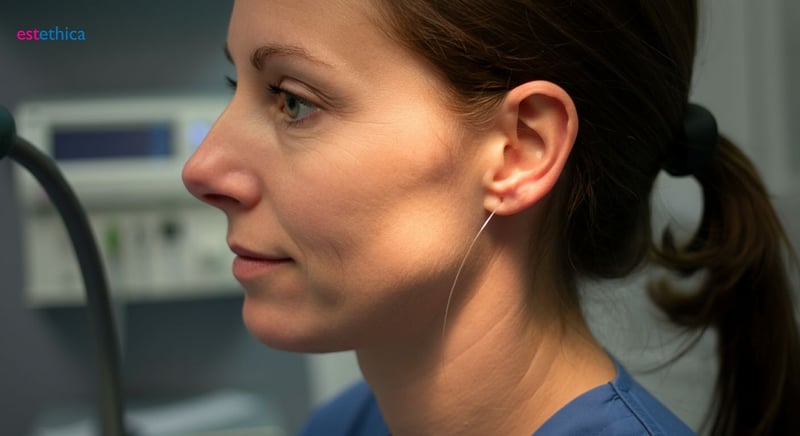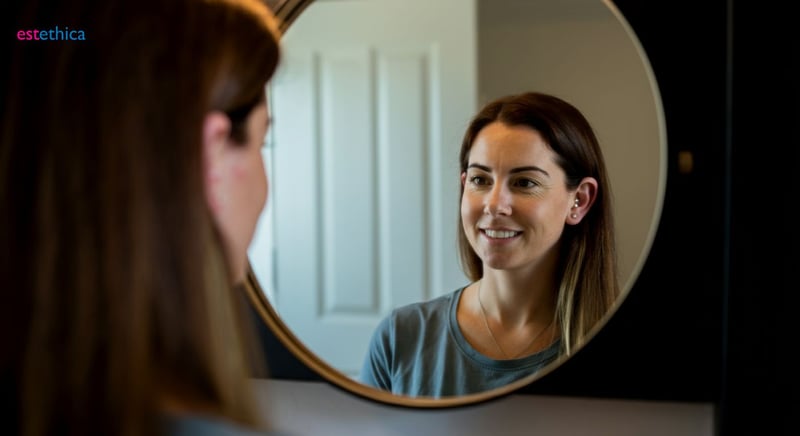Otoplasty: Sculpting Perfect Ears & Boosting Confidence
Discover the art and science of otoplasty, a procedure that not only reshapes ears but significantly boosts confidence. Ideal for those seeking both cosmetic and functional improvements.
Otoplasty, often referred to as ear surgery or cosmetic ear surgery, is a transformative procedure that holds the potential not just to reshape the ear, but to significantly impact self-esteem and confidence. This surgery is more than just ear pinning; it is an intricate process tailored to meet the aesthetic and functional needs of each patient. From correcting protruding ears to achieving symmetry, otoplasty offers solutions for a variety of ear-related concerns.
Understanding Otoplasty: More Than Just Ear Pinning
Exploring the Nuances of Otoplasty
When we speak of otoplasty, many immediately think of ear pinning surgery, a term that doesn’t encompass the full breadth of this intricate procedure. While ear pinning is a common component, otoplasty includes reshaping, resizing, and even reconstructing ear structures. It is an approach to ear reshaping that caters not only to outward appearance but also to improve anatomical functionality, especially in cases where unusual ear cartilage growth affects hearing or comfort. For example, some patients experience significant relief from chronic headaches after undergoing otoplasty to correct previously unnoticed structural issues with their ears.
Customized Solutions for Unique Ear Issues
Patients seeking otoplasty can find customized solutions for unique issues such as excessively large ears, asymmetrical ears, or ears with deformities due to injury or congenital defects. This process requires the skillful hands of expert surgeons who understand the aesthetics of ear anatomy profoundly. Surgeons performing Otoplasty Unveiled: Correcting Ears, Crafting Confidence near me or in any region will often utilize advanced technology and techniques such as pinnaplasty or cartilage sculpting to provide a natural-looking correction. As with all cosmetic procedures, patient-specific planning and consultations are vital to achieving desired outcomes that harmonize with the individual's facial features. Consider the example of a young adult who gains newfound confidence and social ease after otoplasty corrects a long-standing ear asymmetry.
Factors Influencing Otoplasty Costs
- Surgeon's Expertise: Highly skilled surgeons often command higher fees due to their experience and precision.
- Complexity of Procedure: Extensive reshaping or reconstruction may increase costs compared to simpler ear pinning.
- Geographic Location: Prices can vary across different regions or cities due to overhead costs and demand.
Understanding these elements helps manage expectations about otoplasty expenses.
The Otoplasty Process
- Initial Consultation: Discuss goals and assess ear structure for tailored surgical planning.
- Surgical Procedure: Reshape ear cartilage through techniques like cartilage scoring or pinning.
- Post-operative Care: Follow specific instructions for healing and optimal aesthetic outcomes.
Each stage in the process ensures patient safety and fulfills aesthetic aspirations.

Who is the Ideal Candidate for Cosmetic Ear Surgery?
Assessing Candidacy for Otoplasty
Determining if someone is an ideal candidate for otoplasty involves several factors, primarily centering around their physical and psychological preparedness. Suitable candidates typically include children over the age of five, whose ear cartilage is stable enough for surgical reshaping and who are beginning to experience social discomfort due to the appearance of their ears. Adults also frequently seek this procedure to correct long-term aesthetic concerns or to address changes in ear shape caused by injury or aging. The key is that candidates harbor realistic expectations about what surgery can achieve and are committed to following post-operative care instructions. Consider a young student who, after undergoing otoplasty, experiences a significant boost in confidence, actively participating in class without constantly worrying about their ears.
Beyond age and aesthetic desires, candidates must be in good general health, as certain medical conditions can complicate surgery or hinder recovery. It is also essential that they have fully explored and understood the nature of the surgery, including its potential benefits, limitations, and the commitment required during the healing process. Candidates who are well-informed and emotionally stable are more likely to have a positive surgical experience and be satisfied with the results. Think of a professional who decides to undergo otoplasty to align their physical appearance with their professional image, leading to improved self-esteem and career opportunities. Also, consider an individual who lost part of their ear in an accident and seeks reconstructive otoplasty to restore a more natural appearance.
Key Considerations for Otoplasty Candidates
- Psychological Readiness: Candidates should have realistic expectations and be emotionally prepared for the surgical outcome.
- Physical Health: Good overall health is crucial to ensure proper healing and minimize risks during and after surgery.
- Age Appropriateness: For children, the ears should be sufficiently developed, and they should be psychologically mature enough to understand the procedure.
Addressing these factors sets the stage for a successful otoplasty journey.
Navigating Otoplasty Expectations
- Initial Assessment: A thorough evaluation by a qualified surgeon is necessary to determine suitability.
- Realistic Goal Setting: Discuss and establish achievable outcomes based on individual ear structure and aesthetic desires.
- Commitment to Aftercare: Adherence to post-operative instructions is vital for optimal healing and results.
Following these steps contributes to a satisfactory otoplasty experience.

Otoplasty Before & After: Real Transformations, Real Results
Visual Impact of Otoplasty
The effectiveness of otoplasty is often best demonstrated through before and after comparisons. These visual testimonials reveal not just the physical changes achieved but also the emotional uplift experienced by patients. Otoplasty before and after images typically showcase a profound transformation—ears that once drew unwelcome attention are reshaped to provide the patient with newfound confidence. A notable study indicates that over 90% of patients report increased satisfaction with their appearance following otoplasty. The ability to visualize potential outcomes helps alleviate pre-surgery anxieties and reinforces the decision to undergo cosmetic ear surgery.
Many clinics now offer sophisticated imaging software to project post-surgery results during initial consultations. This technology aids individuals in better understanding the potential outcomes of various types of ear surgeries, including ear reduction or reshaping procedures tailored to their specific needs. The emotional impact of these transformations is substantial, often giving rise to positive shifts in personal and professional life spheres. For instance, a previously shy individual might become more outgoing, or a professional’s enhanced confidence can lead to new career opportunities. Further, reconstructive benefits such as improved hearing or comfort can be life-altering enhancements that contribute vastly to one’s quality of life. Consider, for example, that some people undergo otoplasty to fix discomfort caused by wearing headphones or eyeglasses.
Benefits of Seeing Before & After Otoplasty Photos
- Realistic Expectations: Demonstrates typical outcomes and sets realistic goals.
- Emotional Reassurance: Provides visual proof of potential aesthetic improvements, boosting confidence.
- Procedure Understanding: Illustrates how otoplasty can effectively reshape and resize ears.
These factors significantly contribute to informed patient decisions.
Planning Your Otoplasty Journey Effectively
- Consultation: Discuss aesthetic goals with your doctor to determine the procedure.
- Surgical Options: Receive personalized attention for ear reshaping through surgical options.
- Recovery: Experience the emotional benefits of increased self-esteem with the help of before-after comparison.
Each of these actions will help increase your life quality and boost your confidence.

Navigating Ear Surgery Recovery: What to Expect
Optimizing Your Otoplasty Recovery
The period directly following otoplasty, or ear surgery, is critical for achieving the best aesthetic outcomes and minimizing the potential for complications. Effective management during this phase involves adhering to specific guidelines provided by your surgeon, which may include medication schedules for pain relief and antibiotic use to prevent infection. A key component of recovery is wearing a compression bandage or headband consistently, as this helps to reduce swelling and supports the newly shaped ears. To illustrate, patients who diligently follow these post-operative instructions often report experiencing a smoother, more comfortable recovery process. The initial healing period, generally the first week, requires patients to take a break from strenuous activities to ensure proper healing and minimize the risk of disrupting the surgical site.
Maintaining hygiene is crucial but must be done carefully. Your surgeon will provide detailed instructions on how to clean the incision sites to prevent infection without disturbing the healing tissues. Follow-up appointments are also essential for monitoring progress and addressing any concerns that may arise. Attention to detail throughout the recovery period dramatically affects the long-term success of the surgery. For example, avoiding contact sports or activities where the ears could be bumped or folded is imperative for several weeks. Consider also that some patients benefit from sleeping in a reclined position to further reduce swelling. Overall, comprehensive aftercare can significantly reduce scarring and enhance the aesthetic result of the cosmetic ear surgery.
Essential Steps for Post-Otoplasty Care
- Bandage Management: Keep bandages clean, dry, and securely in place as instructed by your surgeon.
- Medication Compliance: Strictly adhere to prescribed medication schedules for pain management and infection prevention.
- Activity Restriction: Avoid rigorous physical activity to minimize the risk of trauma to the surgical site.
Proper adherence to these steps ensures optimal healing and aesthetic results.
Navigating Otoplasty Financials
- Consultation: Begin your otoplasty journey with a conversation with estethica Global for personalized solutions.
- Options: Find a variety of options appropriate for your budget from estethica Global.
- Care: Get the right care with estethica Global and their trained professional team.
These steps allow you to have the right care and the most smooth experience.
Otoplasty: Tailored Ear Reshaping Using Advanced Cartilage Sculpting Techniques
Comprehensive Aftercare: Ensuring Optimal Healing and Aesthetic Success in Otoplasty
Frequently Asked Questions
What is Otoplasty and how does it differ from ear pinning surgery?
Who is considered an ideal candidate for cosmetic ear surgery (Otoplasty)?
What can I realistically expect from Otoplasty before and after transformations?
What is the typical recovery process like after undergoing Otoplasty?
Achieve your aesthetic goals with estethica's personalized and innovative treatments.
📞 Get Your Free Consultation!